How to Mix Wood Tones in a Realistic and Collected Home
I’ve simplified how to mix wood tones into an easy formula! Mixing wood tones can be a challenge. When you may have a house full of unchangeable wood elements (like flooring) in one color, but have collected wood furniture in other tones, what should you do?
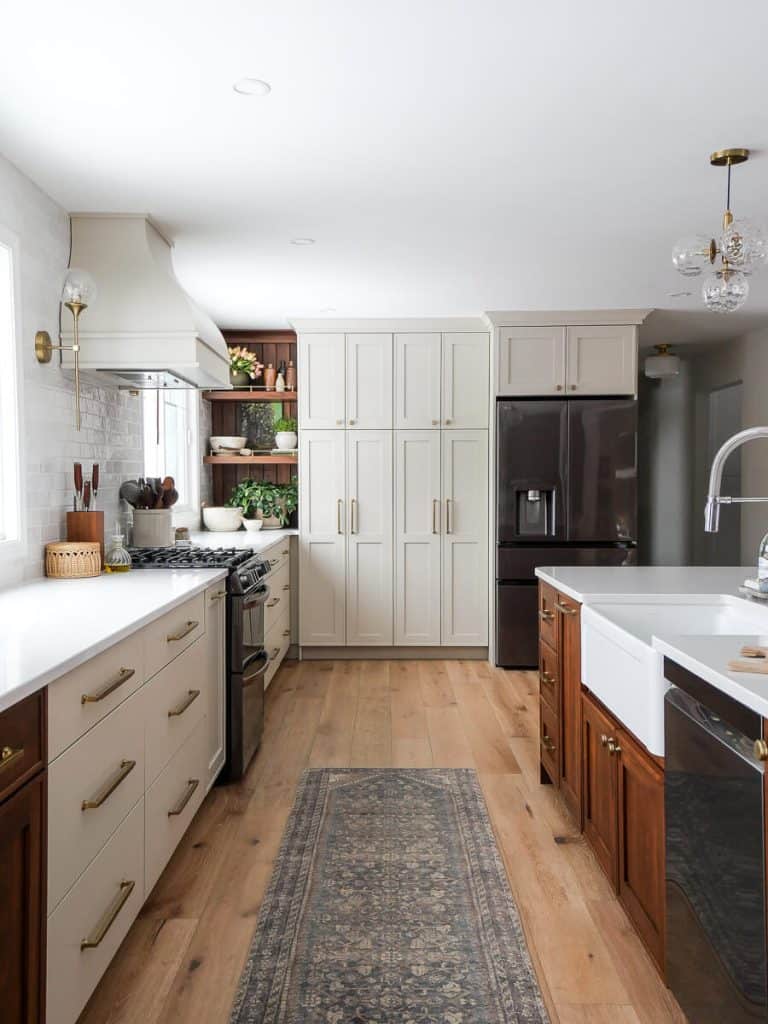
Use my formula.
This formula will even work for homes where you just can’t change certain wood tones due to budget or ability. It allows you to add in new wood colors to achieve your preferred style.
This post may contain affiliate links for your convenience.
Almost 20 years of remodeling homes has taught me two things:
- You have to adapt to the inherited style of previous owners when you buy a home.
- Your personal style will evolve over time.
Both of those realities means that you often have multiple wood tones to work with in the same space. Some of those are easy to swap in and out, like side tables. While others are a much more extensive and expensive fix, like flooring or staircases.
How to Mix Wood Tones: The Easy Formula
This is the simple formula to mixing wood tones in a realistic and collected home.
Dominant wood tone + complementary undertones + dark/light combo + repetition = intentional design
Let’s dive deeper into how this formula plays out, using two of my homes as examples.
Define the Dominant Wood Tone
First, identify the main wood tone of the home. This is often used on permanent fixtures like flooring, kitchen cabinets, staircases or architectural accents like ceiling beams.
Next, decide if the existing wood tone is something you love, can/have to deal with, or are able to change.
- Love: Perfect! The biggest hurdle has been crossed. Head to the next step.
- Deal With It: Adjust the wood tones you bring into your home to accommodate the main wood color.
- Change It: If it’s possible and in budget to do so, change the main wood tone of flooring or cabinetry to be in line with your style before you make any other decisions.
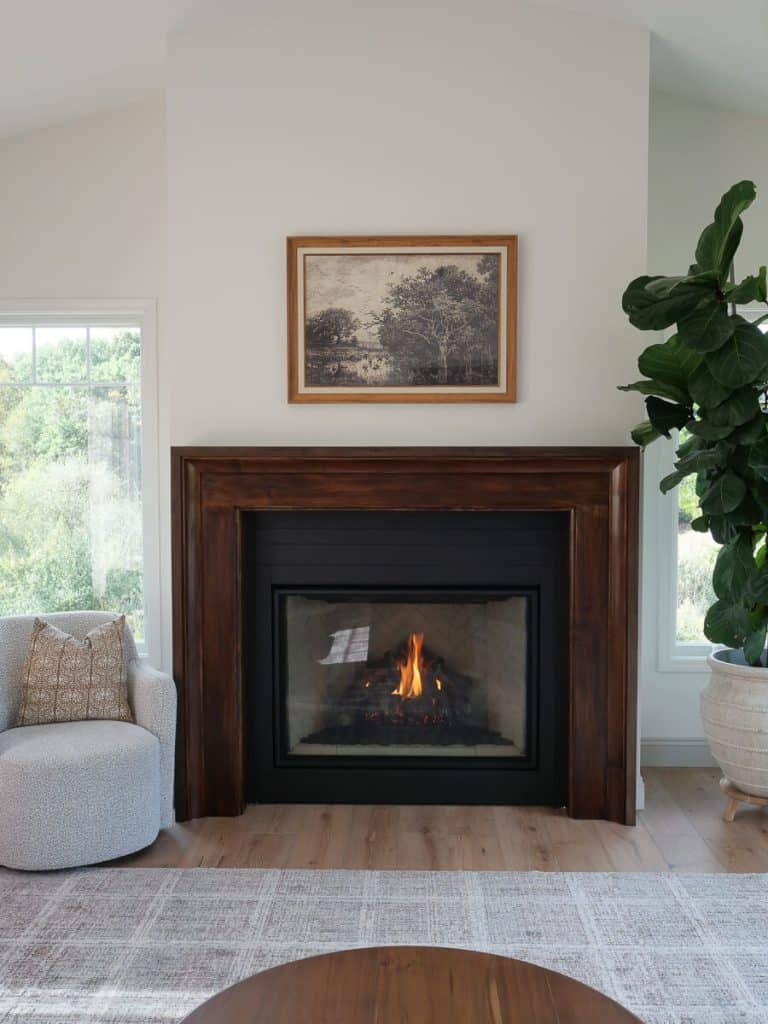
Above: Coffee table, wood mantel, and floors all have various shades of warm red/brown undertones.
Identifying Wood Undertones
After defining what the dominant wood tone of your home is (or will be), the next step is to identify its undertone.
Dark wood tones most commonly have red, orange, brown, or grey undertones.
Light wood tones most commonly have yellow, grey or tan undertones.
Identifying the undertone will help you mix and match additional wood tones in your space. You want to avoid clashing undertones like cherry red and modern grey.
Here’s a crash course in wood undertones.
- Warm Undertones
- Cherry: Red
- Red Oak: Pink
- Mahogany: Red, subtle yellow
- Walnut: Rich brown, can pull in orange or even purple undertones
- Cool Undertones
- Oak: Tans, yellow
- Ash: Light brown, grey
- Maple: Yellow
- Birch: Blonde/amber
Of course, the above list is the natural wood tone. If stain or glazes have been added, then it could have changed the undertone completely.
Mix Two Complementing Wood Tones
Once you’ve identified your dominant wood and its undertone, it’s time to mix in two complementary wood tones.
I like to do this by using three shades of the same undertone. One light, one medium and one dark.
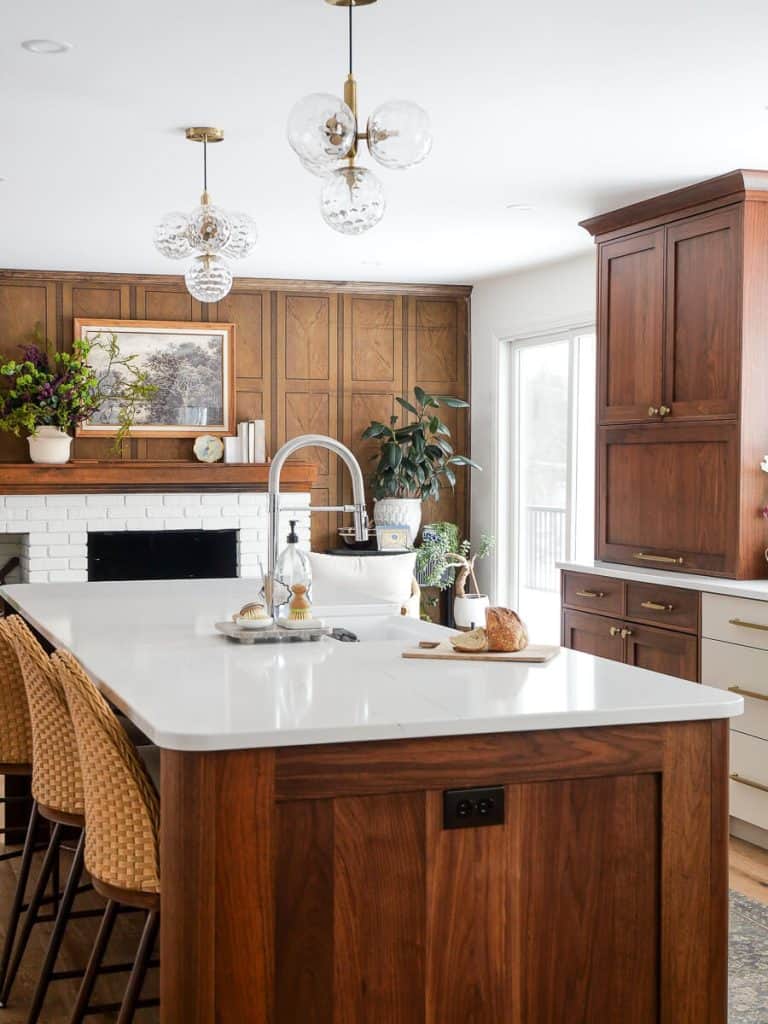
SHOP THE LOOK
As long as the undertone is complementary, you can mix and match to your heart’s delight!
You can see how this was accomplished in our recent kitchen remodel. The cabinets, paneling and floor are all various shades, from light to dark, with similar undertones.
One Dominant Light, One Dominant Dark
Even though you can get away with mixing multiple shades of the same wood tone, I prefer to choose one light and one dark dominant tone.
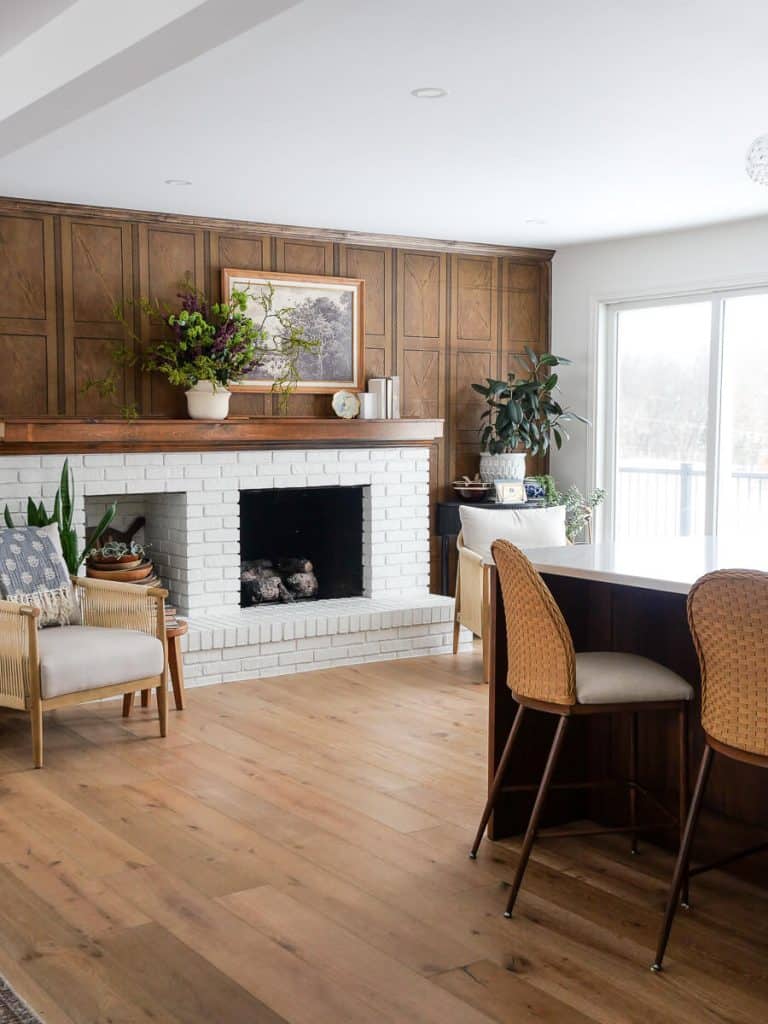
In this house, the floors are my dominant light color in a European Oak. The walnut kitchen cabinets provide the dominant dark color.
You can see above that the floors, arm chair, picture frame and even rattan backs of the bar stools are all a matching light tone. Conversely, the bar stool legs, kitchen island, mantel and wood paneling are all a darker walnut tone.
This works because the two complementing wood tones are repeated in multiple areas. Not only within the same room, but also brought into the dining room and other areas of the home.
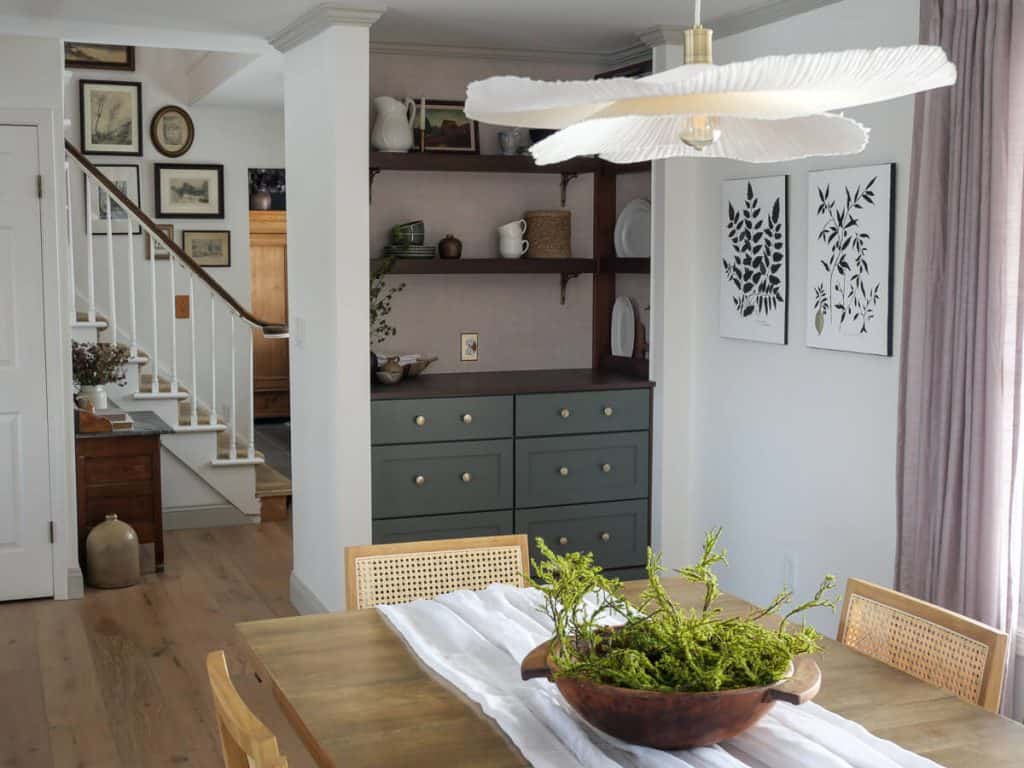
Above: Walnut wood tones repeated in the stair banister, floating shelves, and coffee station countertop. Light oak seen in the flooring, dining table and chairs, and peeking out in the mudroom cabinetry in the back.
Repeating Wood Tones Throughout the Home
The final step in the formula is to repeat these wood tones throughout the entire home.
This is especially important for open concept homes.
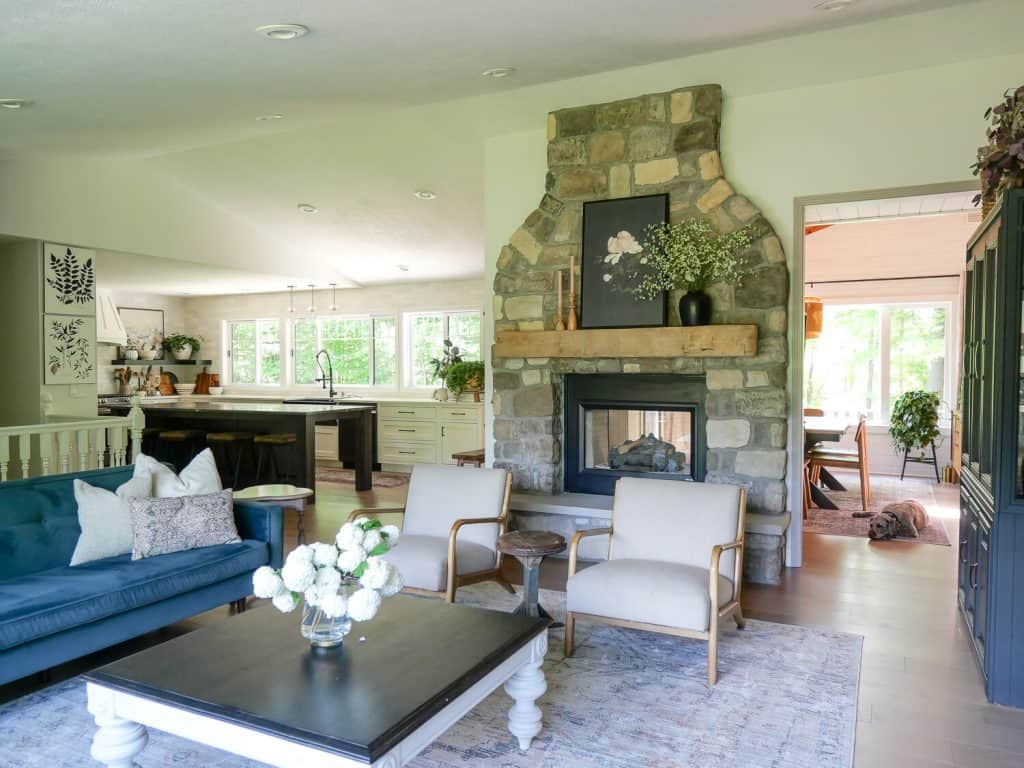
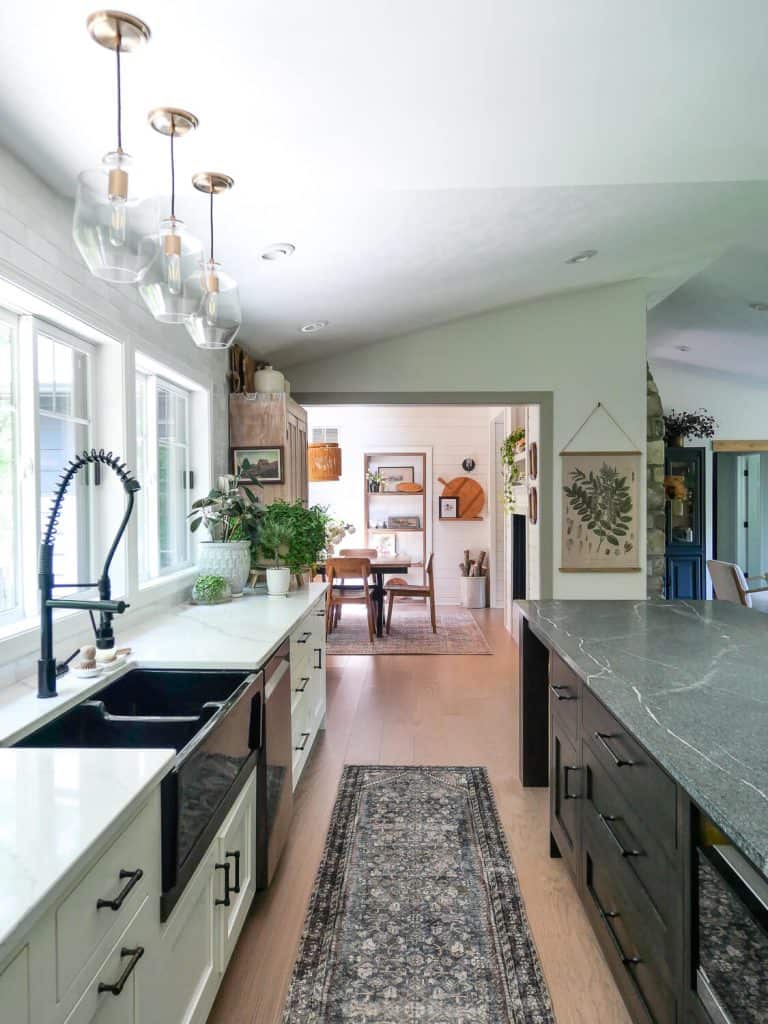
In our last house, the kitchen, dining and living room were all one grand space.
Mixing wood tones makes each room feel like it “fits” with the rest of the house. This is because there are repeated dark browns alongside light brown/pink wood tones in each individual space.
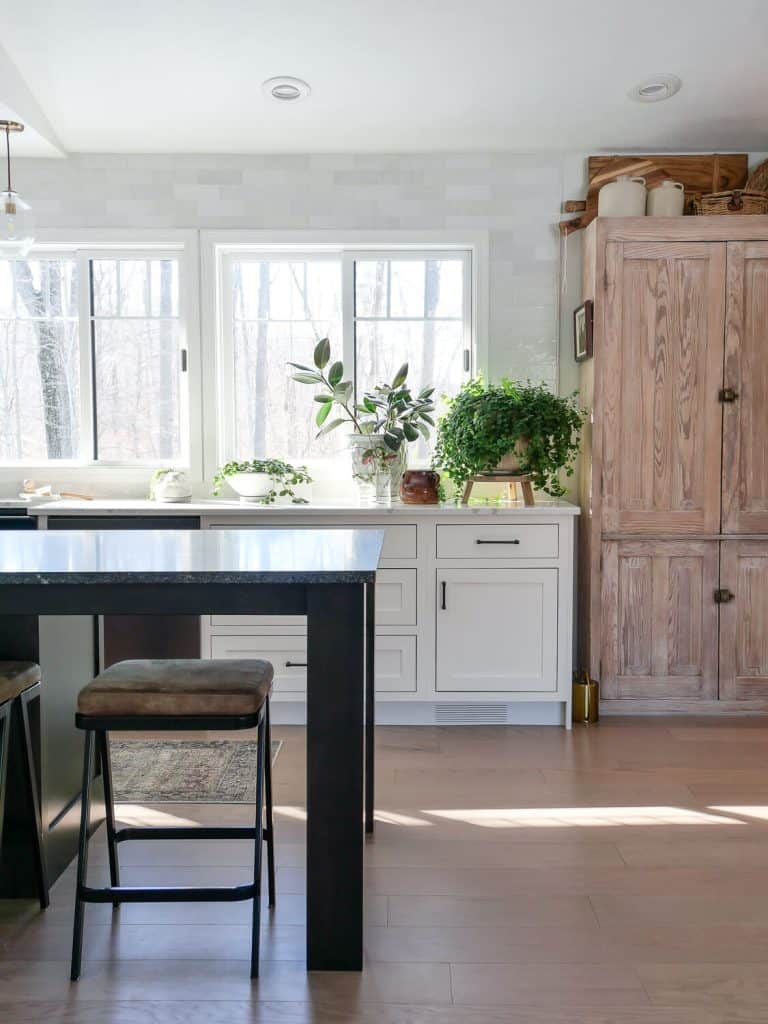
The living room coffee table matches the kitchen island. The dining room table matches the kitchen pantry cabinet. And the fireplace mantel matches the faux beam door header.
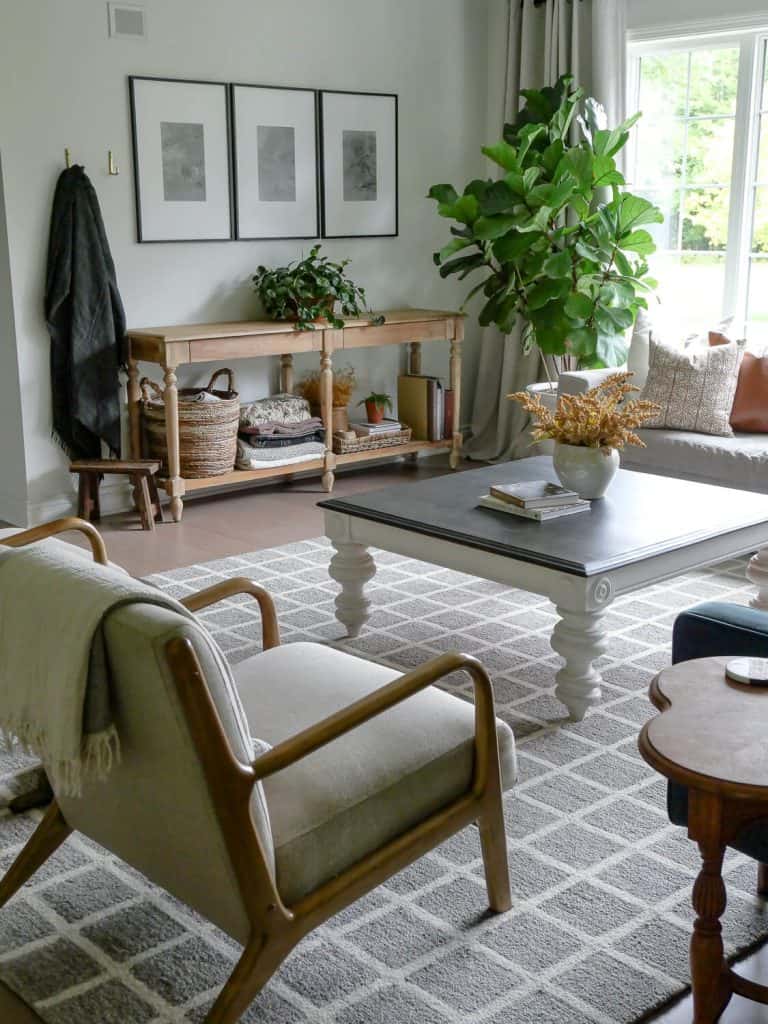
SHOP THE LOOK
How to Mix Wood Tones That Aren’t Complementary
Now, if you are in the “have to deal with it” boat, then it’s highly likely that you have dominant wood tones in your home that do not complement your preferred wood tone. In that case, the formula changes.
Add 1-2 complementing fixtures to the dominant (unchangeable and undesirable) wood tone. Then, add your desired wood tone on repeat throughout the space.
In our last home, red and orange were the dominating undertones. There were some things that we changed over time to eradicate red and orange undertones, like the flooring.
However, there were other areas that we just never got to, like our knotty pine dining room ceiling.
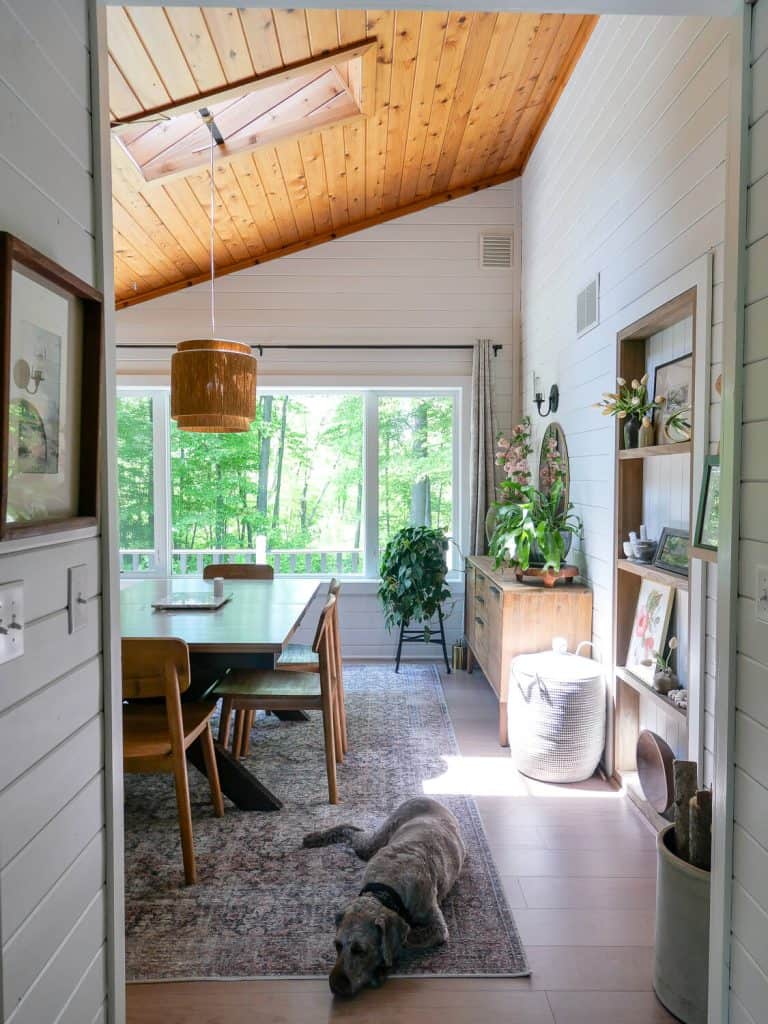
When you have wood tones that you don’t love, but can’t change, then it’s best to bring in the same undertones through other fixtures or furnishings so it feels more cohesive. At the same time, integrate wood tones you do love in repetition.
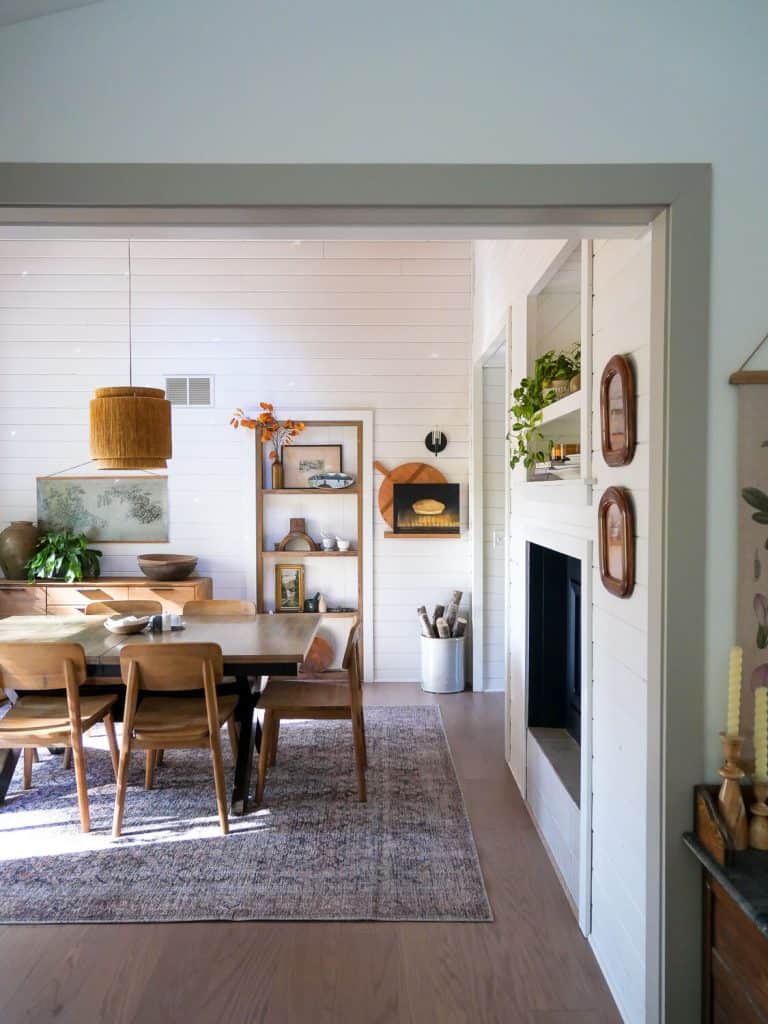
SHOP THE LOOK
As you can see, I brought in the orange tone of the ceiling with the pendant light and dining chairs. At the same time, I repeated the cool updated flooring undertone with the table top and DIY wood shelves.
While I would have loved to completely eradicate the orange undertones, I wasn’t able to change the ceiling color at the time. Instead, I sparingly added lighting and other furniture in the same wood tone to make the space feel like it was an intentional decision.
If, down the road, we had changed the ceiling, then swapping the furniture and lighting for a matching undertone would have been an easy fix.
Refinishing Outdated Wood Tones
Interior design trends ebb and flow just as often as the fashion industry.
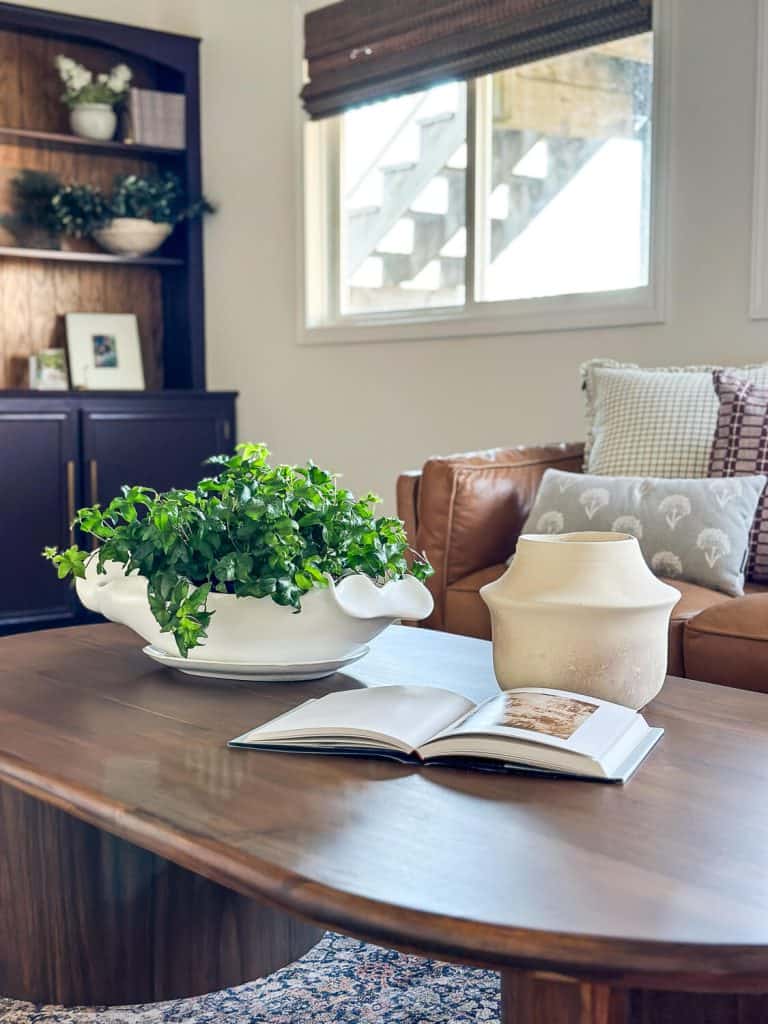
The yellow tones of my basement mantel and bookshelf paneling (below) are on my to-do list to update. But, in reality, they might be back in style in 5 years!
As you can see, for now I added the orange tone sofa and decor accents to make this space feel more cohesive. At the same time, I’ve brought the darker walnut tone in with the coffee table and roman shades. These are all quick and easy fixes.
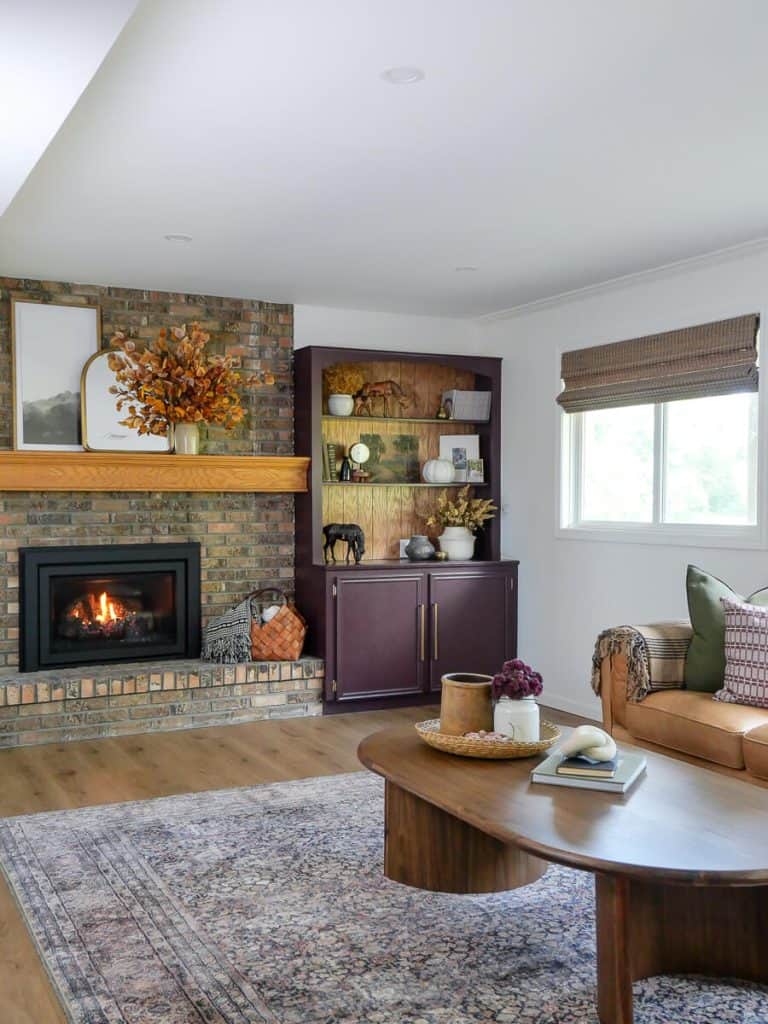
SHOP THE LOOK
However, if you want to permanently change outdated wood tones, a little elbow grease can go a long way!
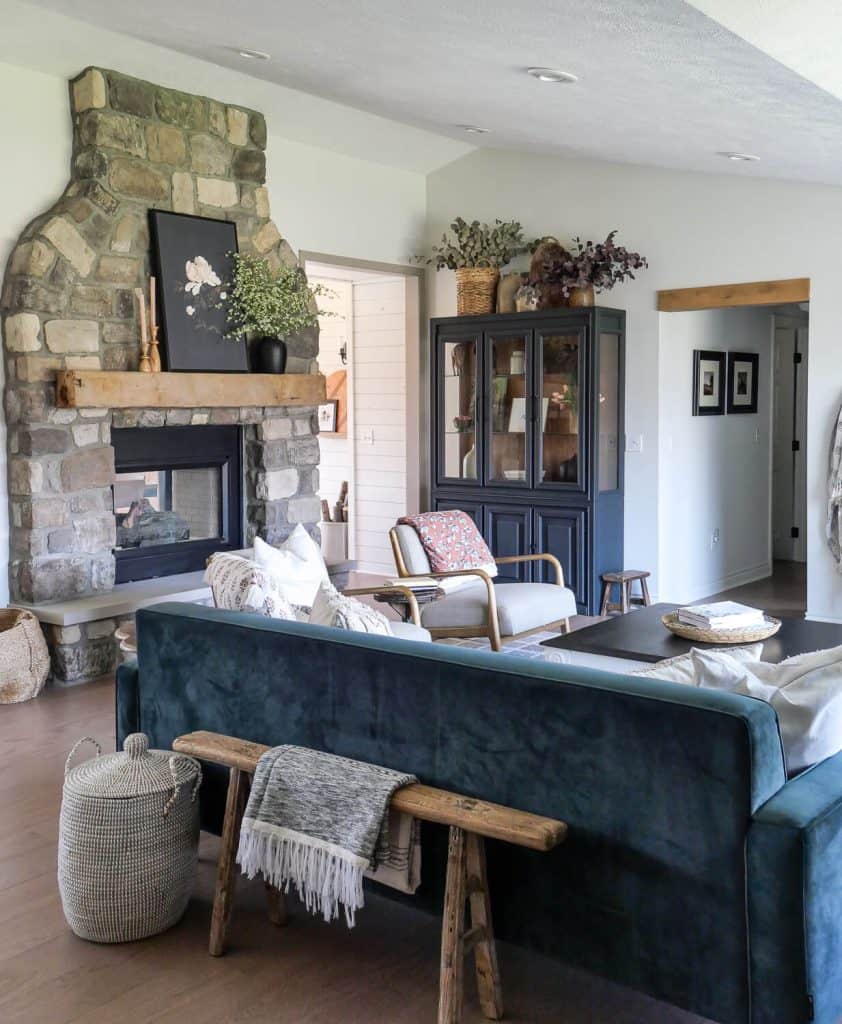
The coffee table shown above was refinished multiple times from light to dark as my style evolved. It started with massive red undertones. I stripped it to its natural wood color, which was much more yellow. And eventually, re-stained it to a dark ebony.
Refinishing furniture is an excellent way to get the wood undertone you want for less cost than buying new.
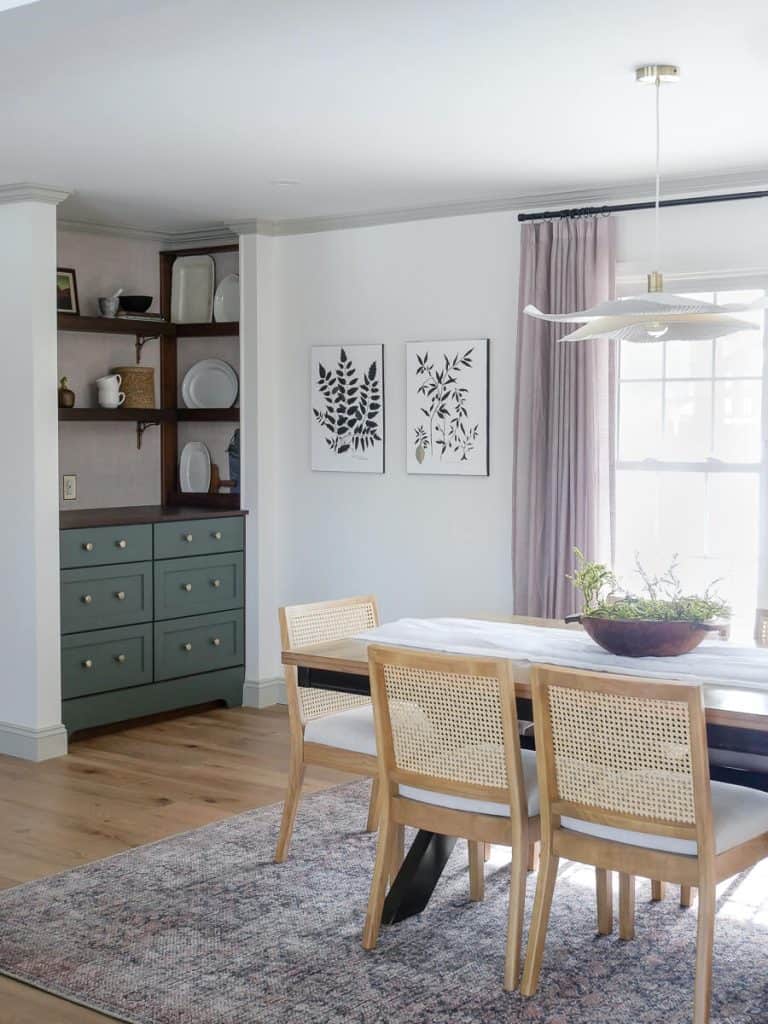
Here are some easy tutorials to help you achieve the wood tone you want in your furnishings!
- How to Change the Color of Wood
- How to Lighten Stained Wood
- Pros and Cons of Oven Cleaner as Wood Stripper
- How to Strip & Refinish a Wood Dining Table
How to Make a Room Interesting
Now, it begs the question, “Should all wood tones just be the same?”
Seems like it would be easier, right?
However, mixing wood tones brings so much interest and depth into your home design.
When you only use one wood tone, a room will quickly fall flat of personality. So make the space interesting by mix and matching dark and light wood tones.

You can also throw in painted furniture and ground a space with black accent tables or cabinets.
I hope this formula for how to mix wood tones in a collected home has been helpful to you!
Remember: one dominant wood tone, one light and one dark of complementing undertones, and put them on repeat throughout the entire home.
And, make those unchangeable (and undesirable) tones work for you until you’re able to change them by repeating the tones sparingly with small accents.
Thanks for stopping by the blog today! Make sure to subscribe to get my Grace Notes directly to your inbox and to access all my insider perks. You can also follow along daily on Instagram and weekly on YouTube!
~Sarah

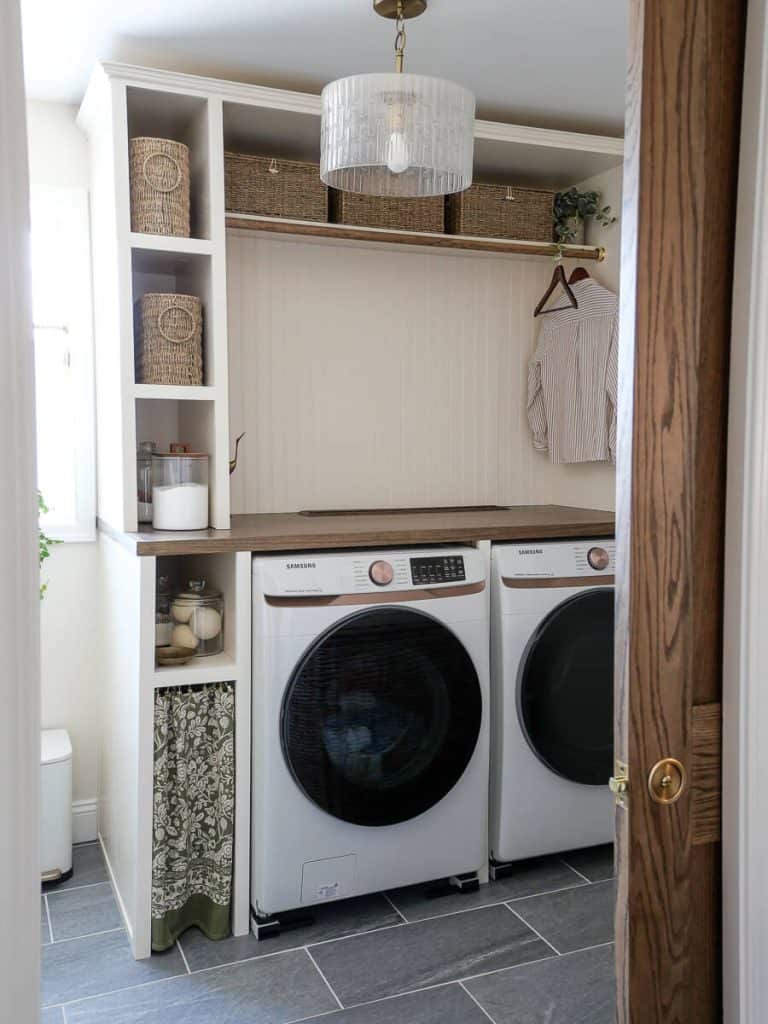

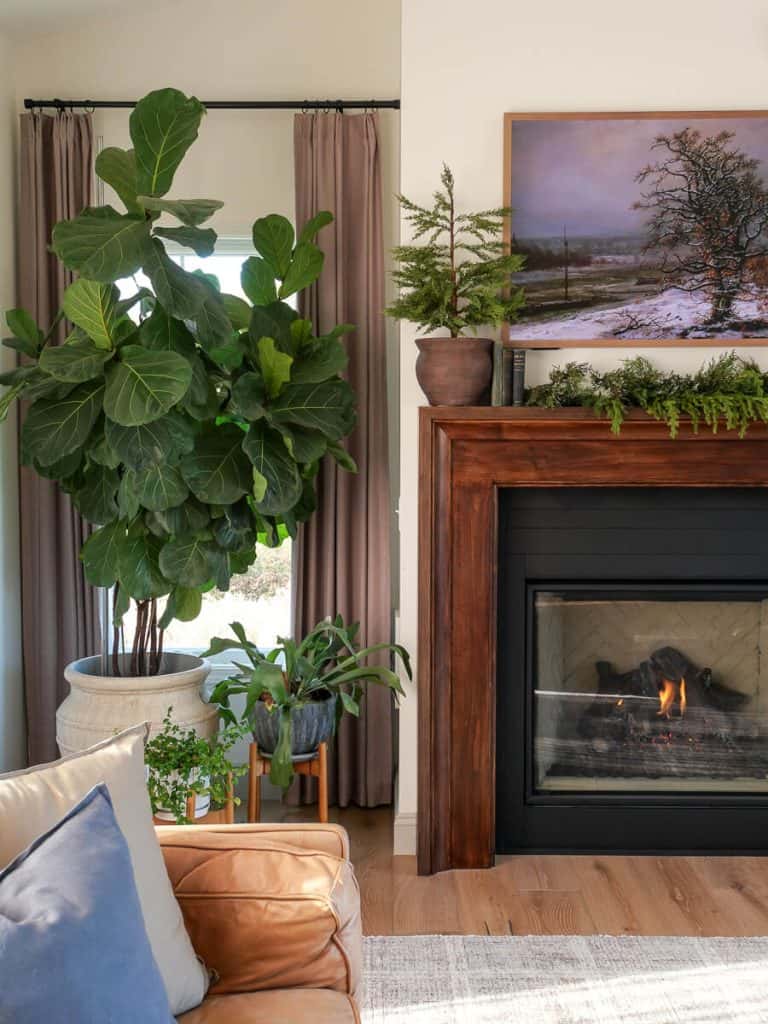
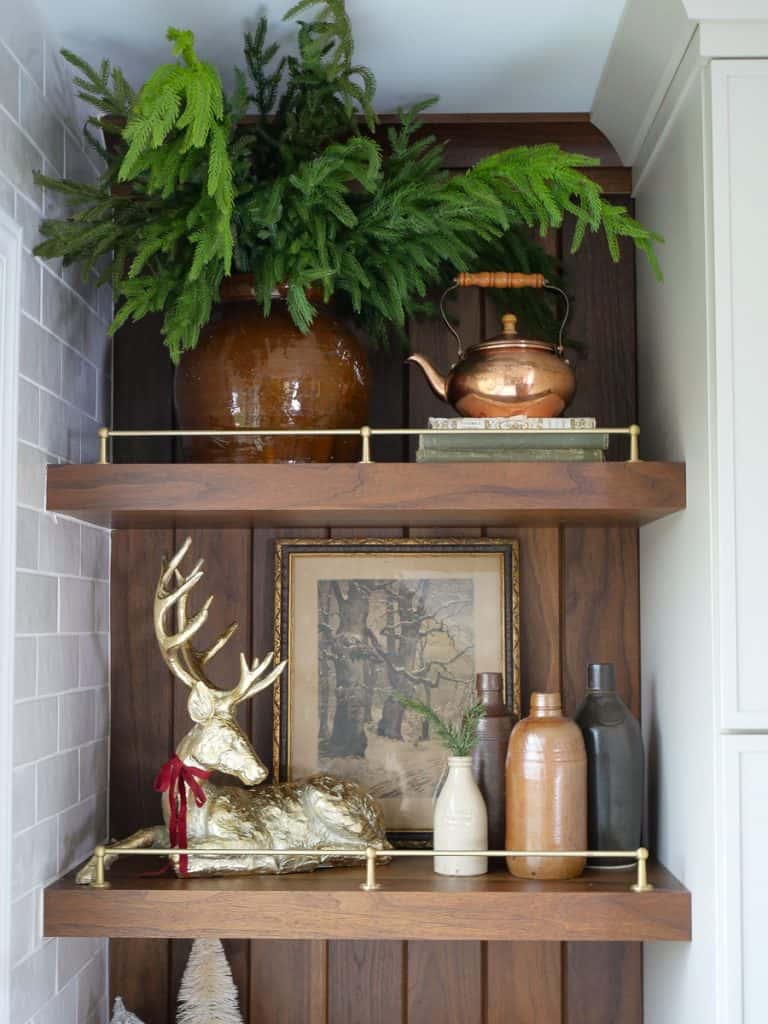

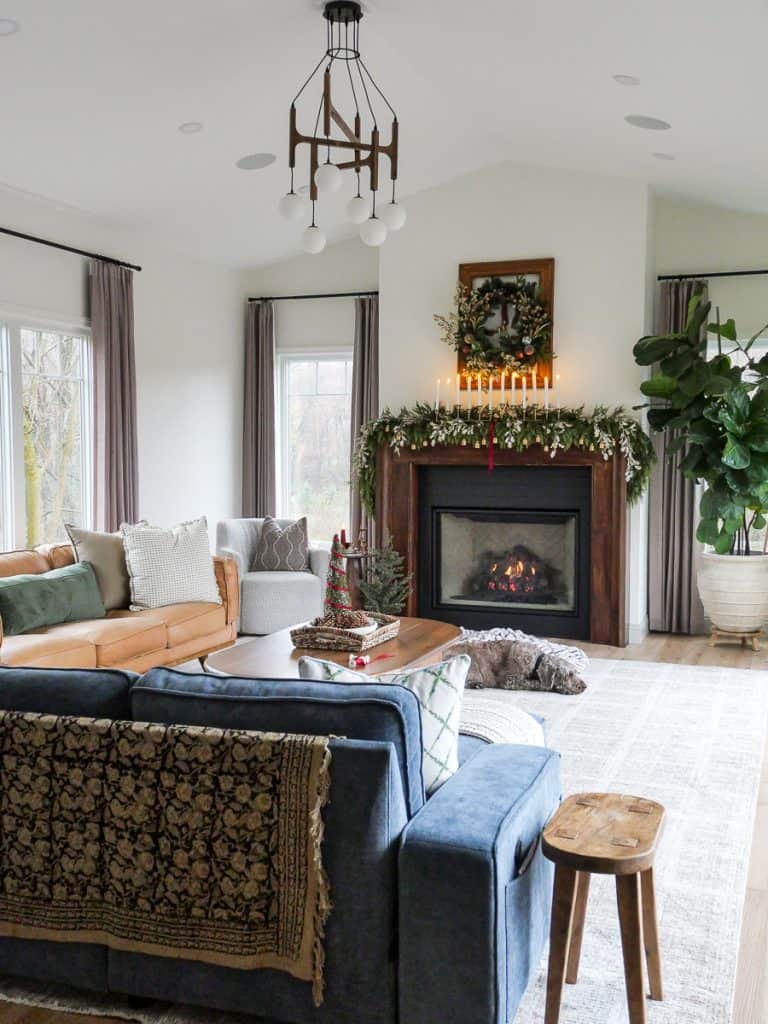
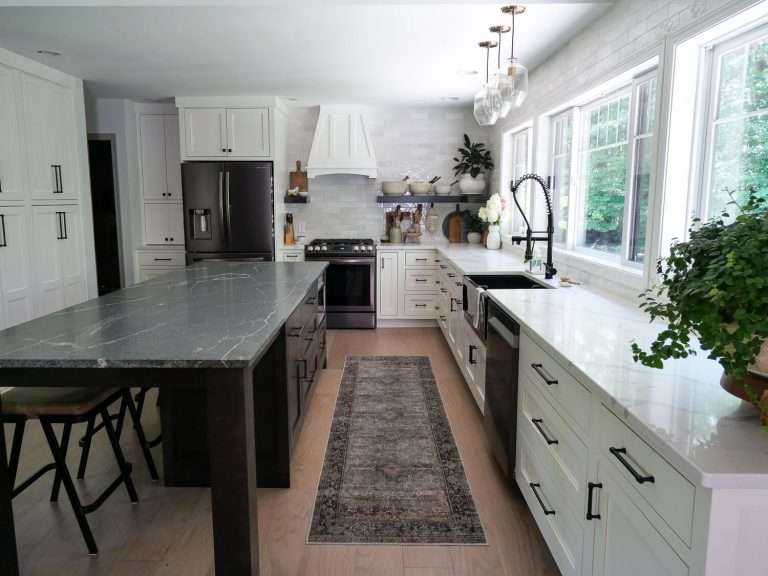
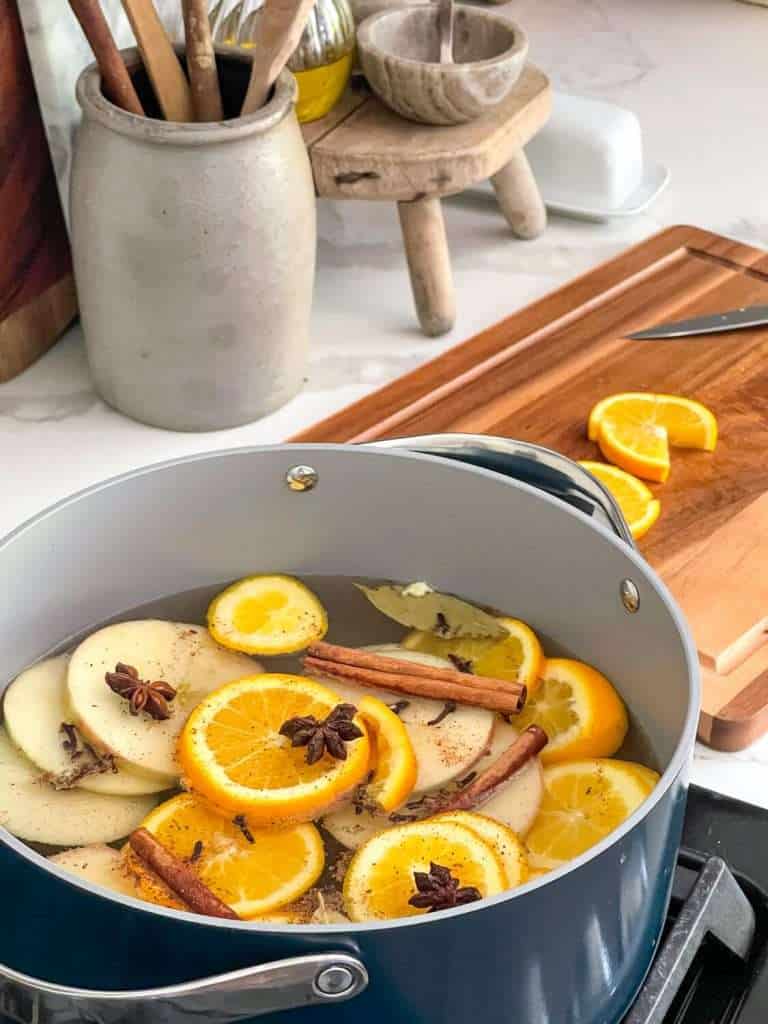
This formula for mixing wood tones is genius! I once had a similar issue with my floors and furniture. Can’t wait to try it. What if you have more than two complementary tones?
That’s fine! As long as they are complementary multiples work great.